Pleated Image
2016–
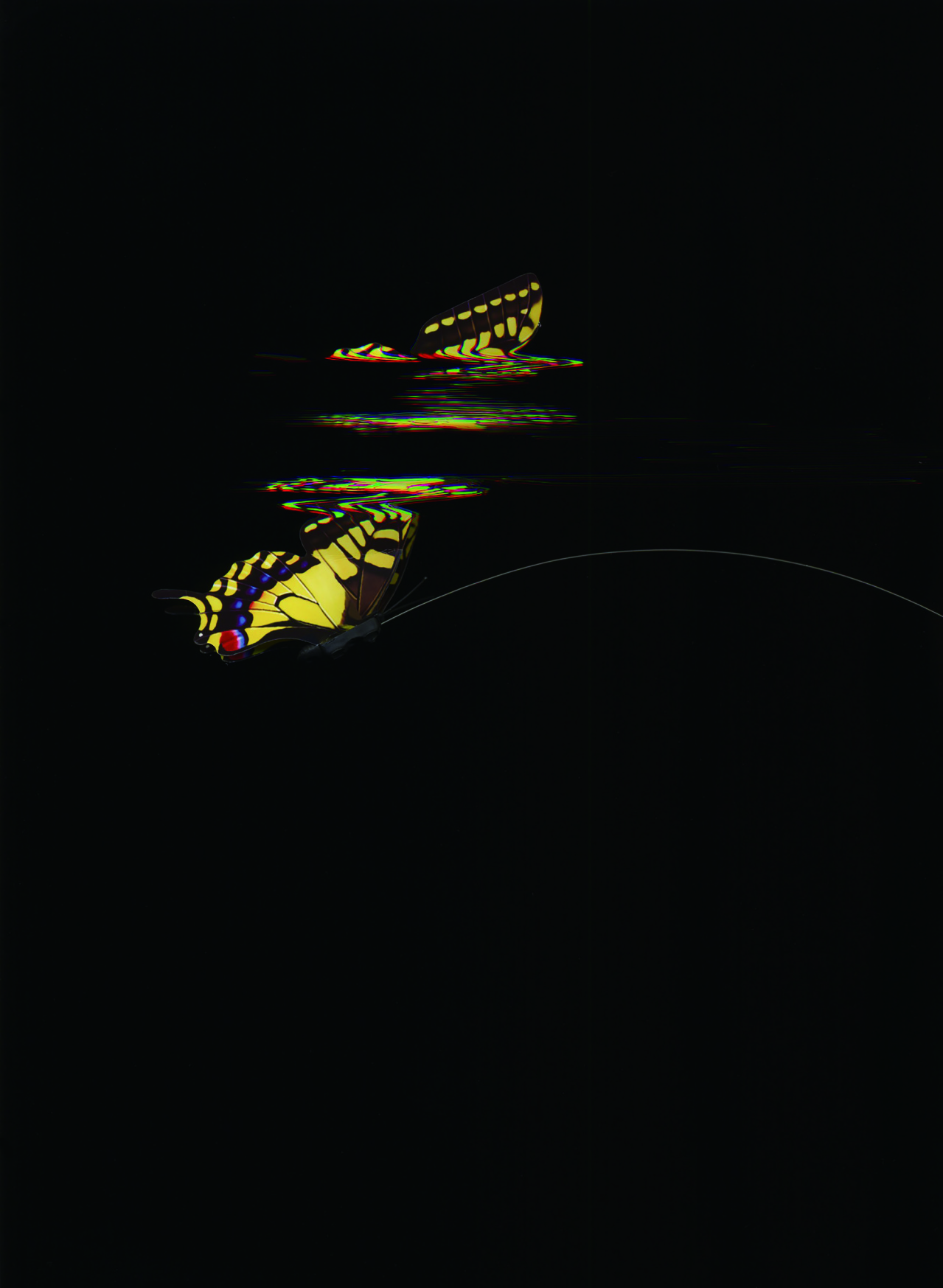
Objects that previously appeared in Mohri’s works, such as ribbons, feather dusters, ropes, and butterflies, were arranged and installed within kinetic systems. The movements of each object were scanned continuously by a scanner, and the visual data thus produced — a nearly infinite stream, in theory — was saved on a hard disk.
Mohri calls the various phases of movement and time produced by these objects in this way a “pleated image” (expressed in the singular, since these are not multiple images, but rather different modalities or aspects of a single image). This image, which proliferates continuously each time it is scanned, folds movement and time within itself in a manner that is different from a moving image, where time advances in a linear fashion.
These images recall a number of visual experiments over the course of art history.
For example, the phenomenon of how time becomes incorporated into an image as a multi-layered, continuous entity while the scanner reads the image can be seen as an extension of the “moving images” captured in Étienne-Jules Marey’s “chronophotographs.” However, unlike chronophotography and cinematography, which measure movement, divide it into parts, and visualize it, the Pleated Image is more akin to what Georges Didi-Huberman, in invoking Bergson, refers to as a continuity that “drags something along with it, both visually and temporally.” “The image-movement, therefore, is an image that is dragged along and lags behind” (Georges Didi-Huberman, Image-Ship Wake, catalogue for “Traces” exhibition).
In another sense, the flatness and directness of these images are also reminiscent of the Photograms (Rayograms) of artists like László Moholy-Nagy and Man Ray. As opposed to how photograms emphasize a certain two-dimensionality, generating images when objects block the absorption of light, the Pleated Image allows objects to be perceived by illuminating them, thereby acquiring an element of depth (three-dimensionality).
Mohri also likens these images, with their rough, blurred quality, frequent glitches, and digital noise, to so-called “spirit photography,” in the sense that “they capture things that should not have been captured.”
Previously, Mohri found herself fascinated by mechanical errors, or the slippages and glitches that lie concealed within natural phenomena, producing works that gave visual form to these invisible forces. In a similar way, this massive “pleated image” evokes a sense of movement and time that remains invisible to the human eye, hinting at these unseen presences.
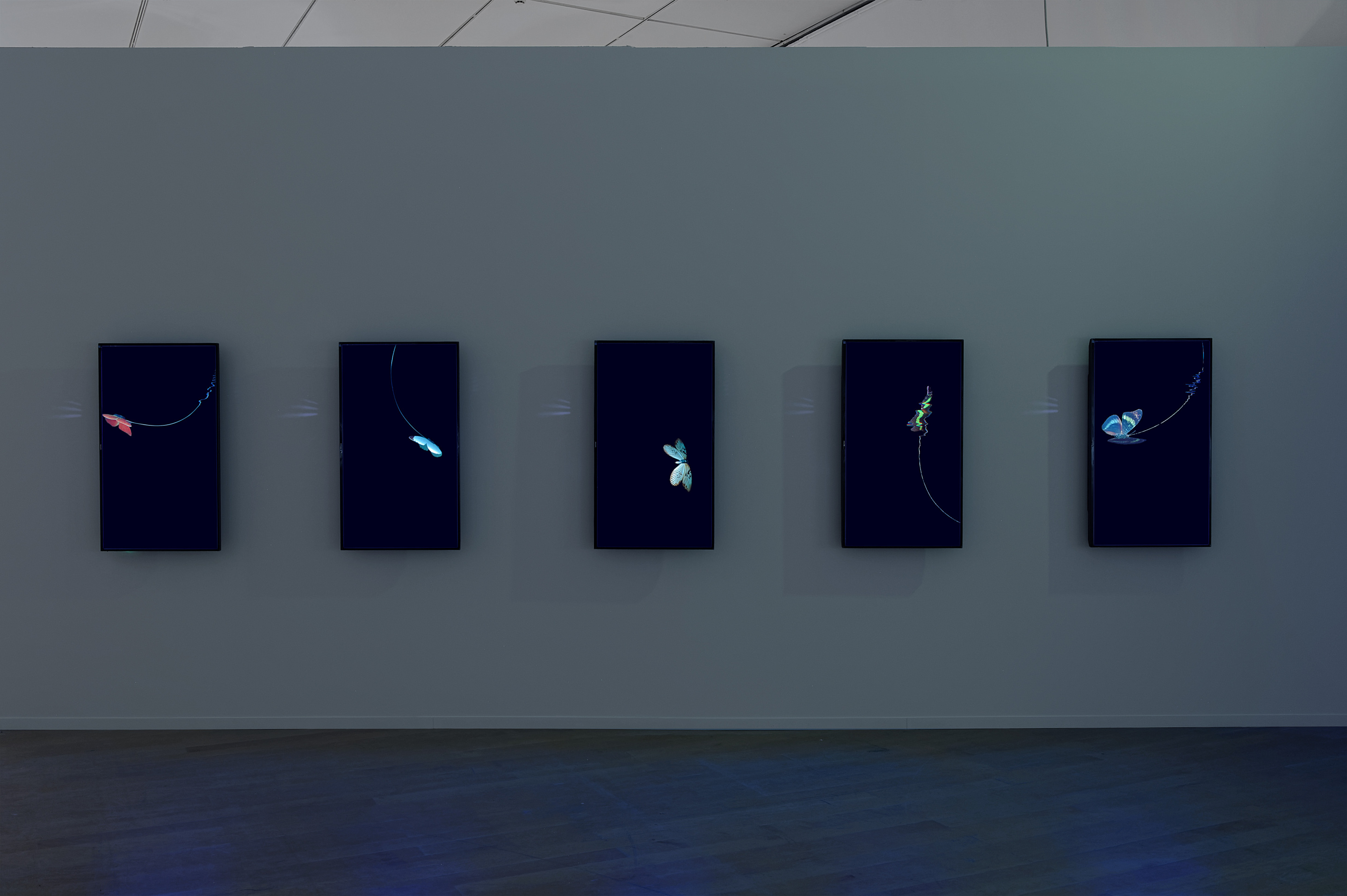
Photo: Blaise Adilon, Biennale de Lyon 2017
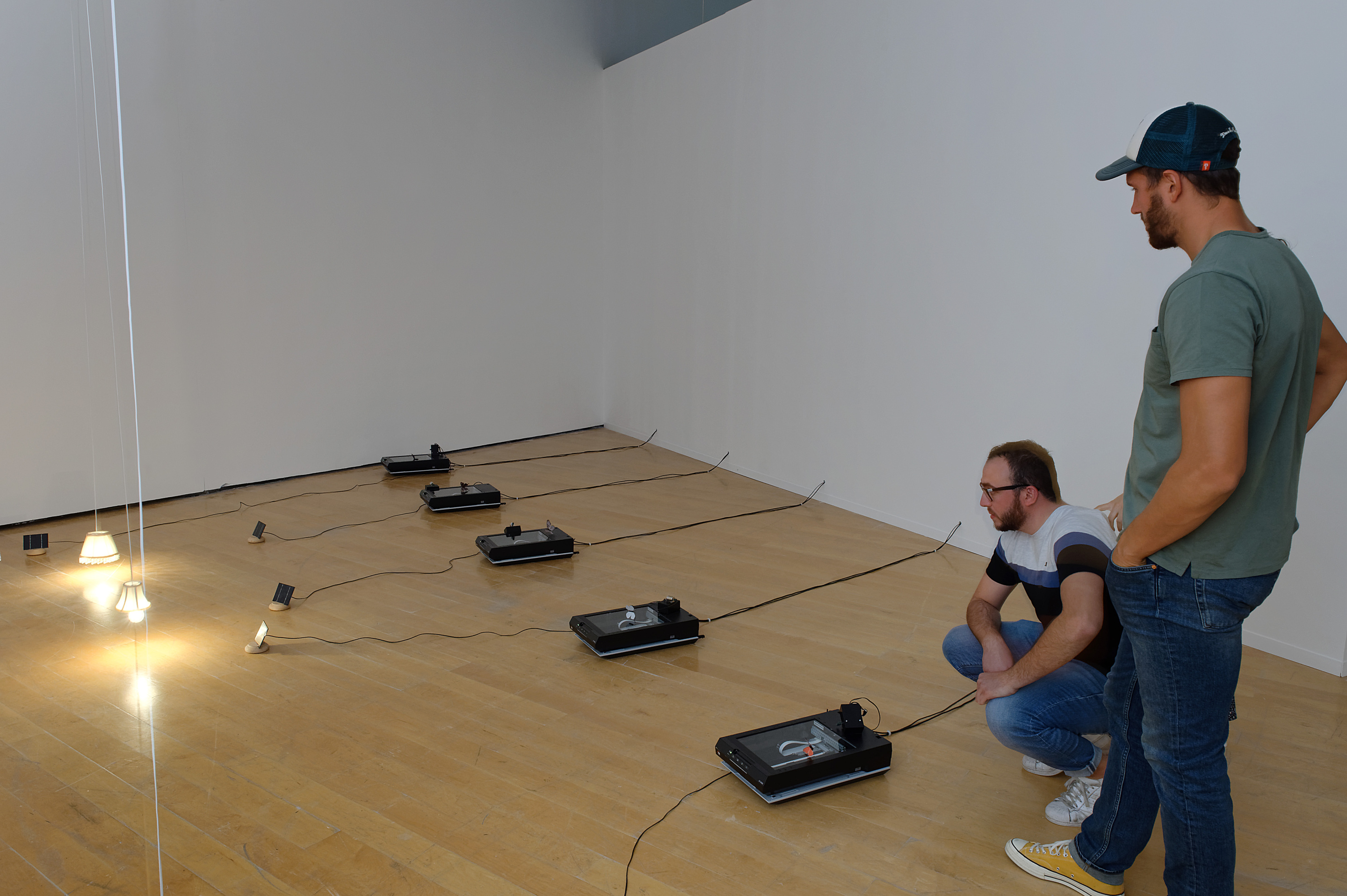
Photo: Blaise Adilon, Biennale de Lyon 2017
Exhibition View by Minatomachi Art Table, Nagoya [MAT, Nagoya], 2016
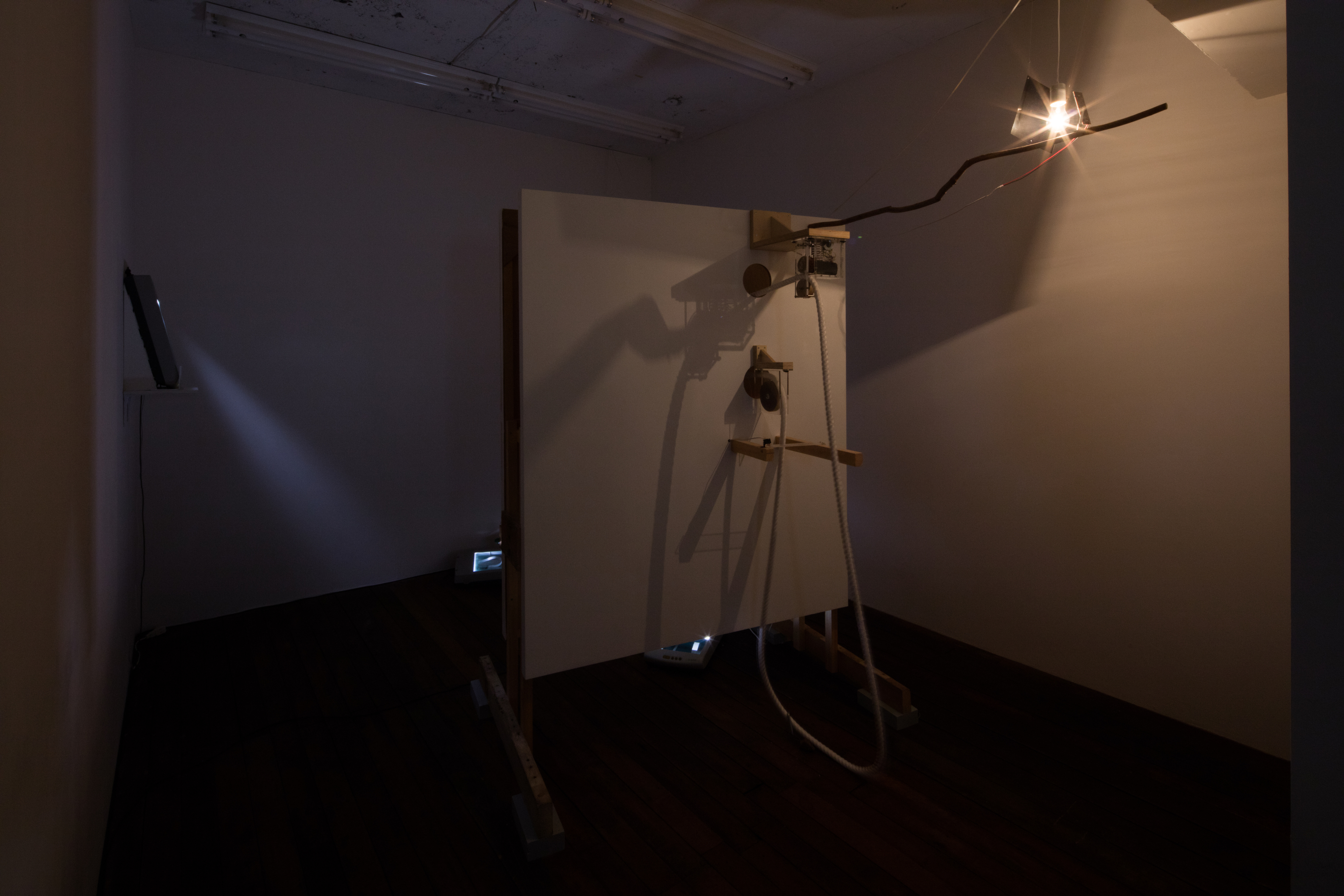
Pleated Image: Fort Da (Wall), Waitingroom, 2016
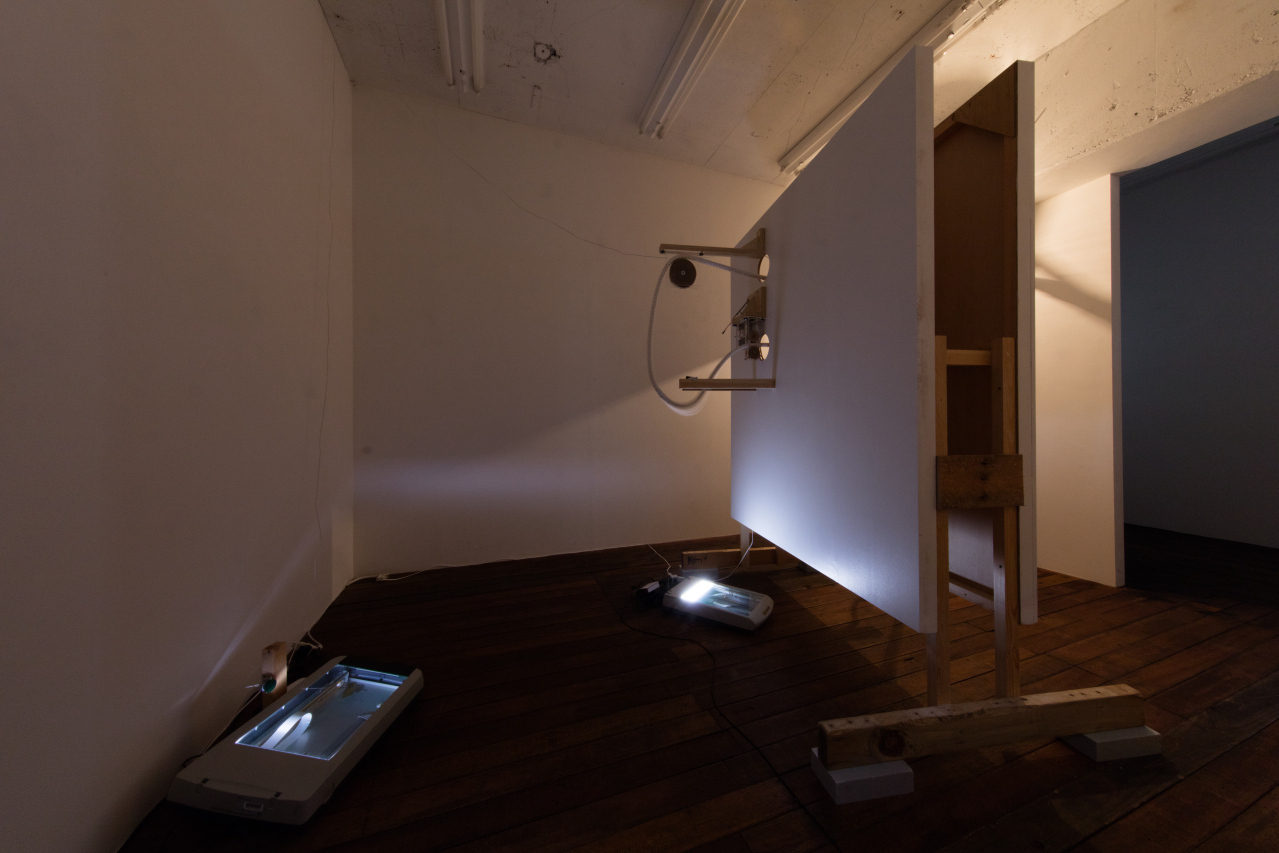
Pleated Image: Fort Da (Wall), Waitingroom, 2016
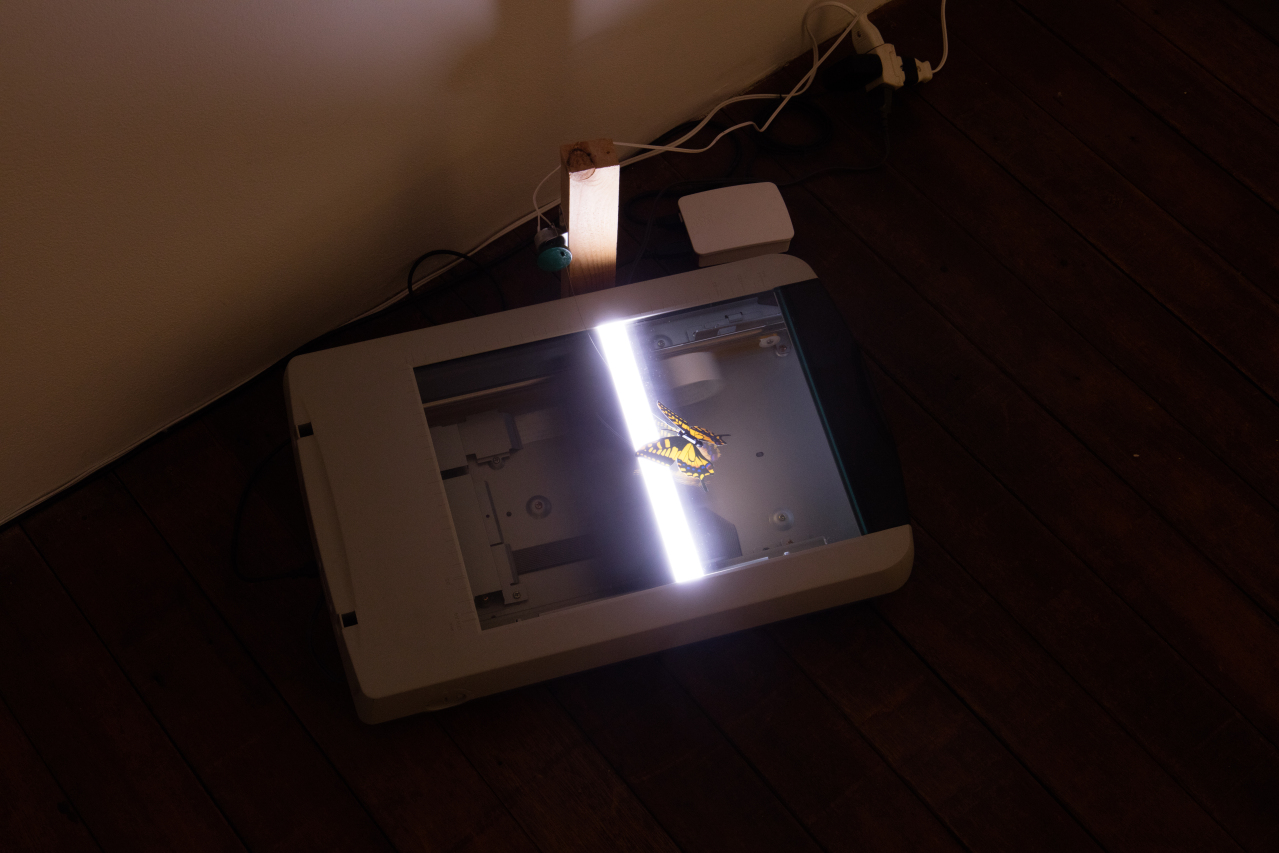
Pleated Image: Fort Da (Wall), Waitingroom, 2016
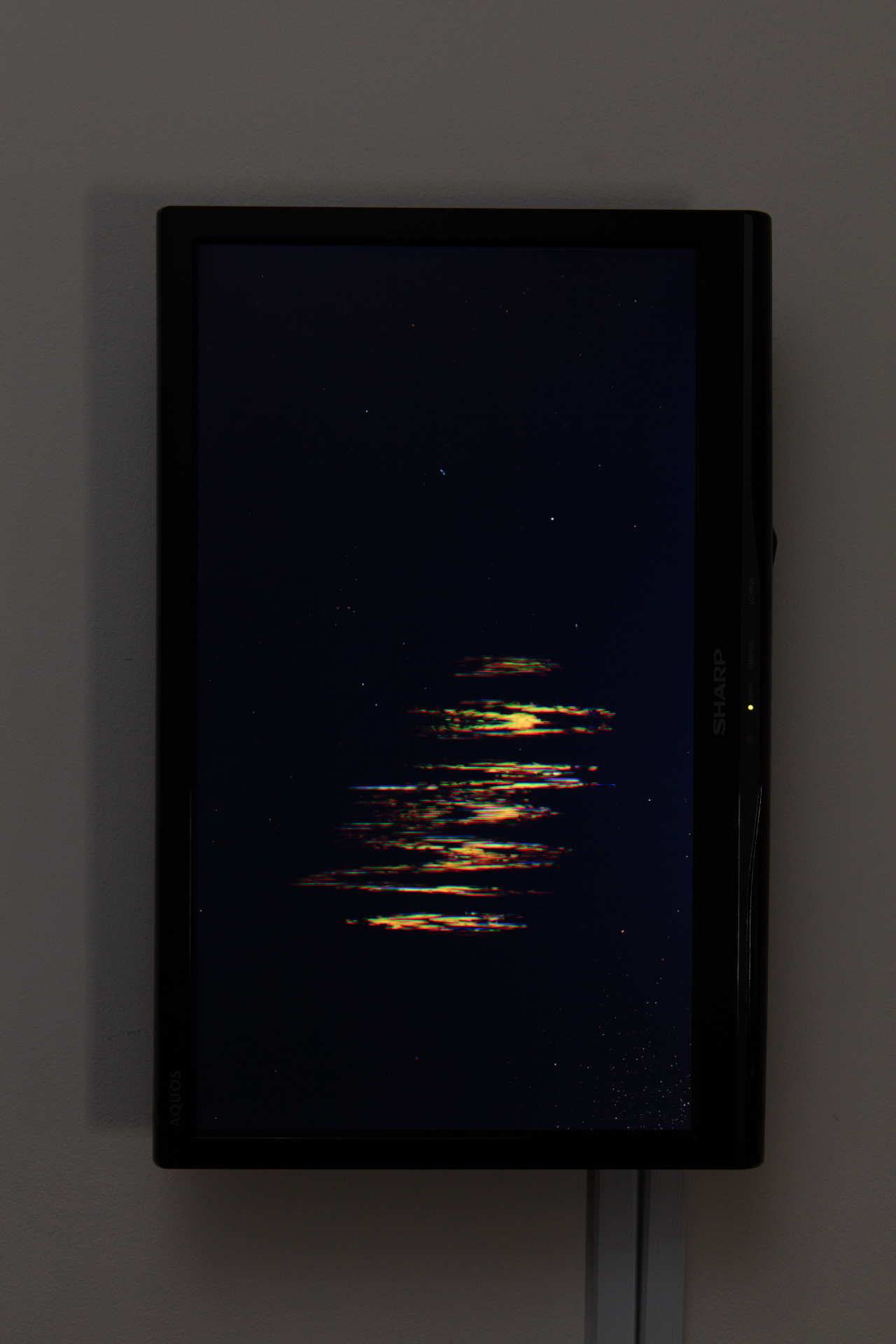
Pleated Image (Box), Waitingroom, 2016
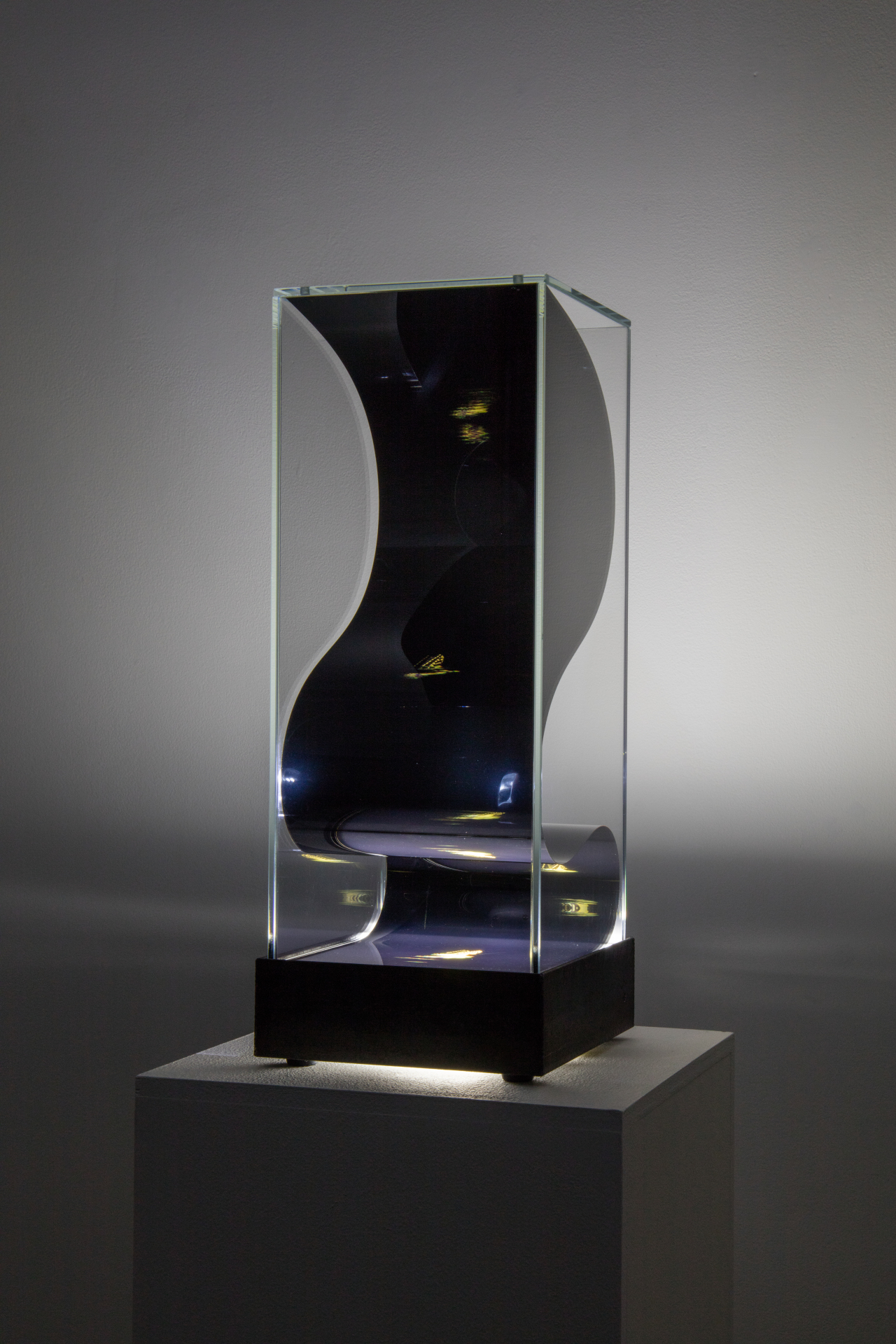
Pleated Image, Waitingroom, 2016